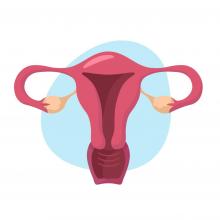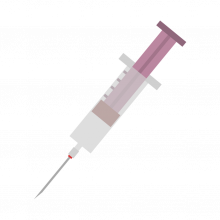Recent Publications

Amir Bashkin, Manar Ghanim, Reem Miari, Samer Srouji, Mizied Falah: Forty-One Plant Extracts Screened for Dual Antidiabetic and Antioxidant Functions: Evaluating the Types of Correlation between -Amylase Inhibition and Free Radical Scavenging (Molecules.)
Dysregulation of glucose homeostasis followed by chronic hyperglycemia is a hallmark of diabetes mellitus (DM), a disease spreading as a worldwide pandemic for which there is no satisfactory dietary treatment or cure. The development of glucose-controlling drugs that can prevent complications of DM, such as hyperglycemia and oxidative stress, which contribute to the impairment of the key physiological processes in the body, is of grave importance. In pursuit of this goal, this study screened 41 plant extracts for their antidiabetic and antioxidant activities by employing assays to test for α-amylase inhibition and free radical scavenging activity (FRSA) and by measuring glucose uptake in L6-GLUT4myc cells.

Avi Matityahu, Itay Onn: Hit the brakes - a new perspective on the loop extrusion mechanism of cohesin and other SMC complexes (J Cell Sci .)
The three-dimensional structure of chromatin is determined by the action of protein complexes of the structural maintenance of chromosome (SMC) family. Eukaryotic cells contain three SMC complexes, cohesin, condensin, and a complex of Smc5 and Smc6. Initially, cohesin was linked to sister chromatid cohesion, the process that ensures the fidelity of chromosome segregation in mitosis. In recent years, a second function in the organization of interphase chromatin into topologically associated domains has been determined, and loop extrusion has emerged as the leading mechanism of this process. Interestingly, fundamental mechanistic differences exist between mitotic tethering and loop extrusion. As distinct molecular switches that aim to suppress loop extrusion in different biological contexts have been identified, we hypothesize here that loop extrusion is the default biochemical activity of cohesin and that its suppression shifts cohesin into a tethering mode.

Avi Matityahu, Itay Onn: Hit the brakes - a new perspective on the loop extrusion mechanism of cohesin and other SMC complexes (J Cell Sci .)
The three-dimensional structure of chromatin is determined by the action of protein complexes of the structural maintenance of chromosome (SMC) family. Eukaryotic cells contain three SMC complexes, cohesin, condensin, and a complex of Smc5 and Smc6....With this model, we aim to provide an explanation for how loop extrusion and tethering can coexist in a single cohesin complex and also apply it to the other eukaryotic SMC complexes, describing both similarities and differences between them. Finally, we present model-derived molecular predictions that can be tested experimentally, thus offering a new perspective on the mechanisms by which SMC complexes shape the higher-order structure of chromatin.
G Fonar, B Polis, D S Sams, A Levi, A Malka, E Elliot, A O Samson: Modified Snake α-Neurotoxin Averts β-Amyloid Binding to α7 Nicotinic Acetylcholine Receptor and Reverses Cognitive Deficits in Alzheimer's Disease Mice (Mol Neurobiol .)
Alzheimer's disease (AD) is the most common cause of senile dementia and one of the greatest medical, social, and economic challenges....we designed a chemically modified α-cobratoxin (mToxin) to inhibit the interaction between Aβ and α7AChR. Subsequently, we examined mToxin in a set of original in silico, in vitro, ex vivo experiments, and in a murine AD model.... (Gennadiy Fonar, Baruh Polis, Dev Sharan Sams, Almog Levi, Assaf Malka, Evan Elliot, Abraham O Samson)

T Zoabi, O Ronen: A novel technique for protecting staff during microlaryngoscopy procedures (J Laryngol Otol .)
Microlaryngoscopy is an aerosol-generating procedure. This paper presents a novel approach for better protecting staff during microlaryngoscopy.

Inbar Ben Shachar, Naama Marcus: Anatomical and functional outcomes of uterus preservation and pelvic organ prolapse repair with vaginal trocar-less mesh kit (Endofast): A retrospective study of 239 patients (Eur J Obstet Gynecol Reprod Biol .)
The aim of the study was to assess safety and long term efficacy as well as short and long term complications of vaginal prolapse mesh repair using single incision trocar-less system while preserving the uterus.

Aatef Khattib, Elena Bukovetzky, Orna Dally Gottfried: Is the probable spillage of the lung surfactant dipalmitoylphosphatidylcholine the ultimate source of diabetes type 1? (Respir Physiol Neurobiol .)
The lung surfactant dipalmitoylphosphatidylcholine (DPPC) most probably leaks into the blood, settling on the luminal aspect of blood vessels to create active hydrophobic spots (AHS). Nanobubbles are formed at these spots from dissolved gas. We hypothesized that when a large molecule in the blood comes into contact with a nanobubble at the AHS, its tertiary structure is disrupted. An epitope not previously having undergone thymus education may then prompt an autoimmune response.

Nakhoul Farid, Nakhoul Nakhoul: Active vitamin D supplementation and COVID-19 infections: review (Ir J Med Sci . )
SARS-CoV-2, causing the lethal disease COVid-19, is a public health emergency in the 2020 global pandemic.... In this review, we will explain the cross talk between the active vitamin D and the angiotensin-converting enzyme 2, and summarize the data from the literature.

Anjali Pathania, Avi Matityahu, Itay Onn: Chromosome loading of cohesin depends on conserved residues in Scc3 (Curr Genet . )
Cohesin is essential for sister chromatid cohesion, which ensures equal segregation of the chromatids to daughter cells. However, the molecular mechanism by which cohesin mediates this function is elusive. Scc3, one of the four core subunits of cohesin, is vital to cohesin activity. However, the mechanism by which Scc3 contributes to the activity and identity of its functional domains is not fully understood. Here, we describe an in-frame five-amino acid insertion mutation after glutamic acid 704 (scc3-E704ins) in yeast Scc3, located in the middle of the second armadillo repeat.

Karl Skorecki: Kinins and Chymase: The Forgotten Components of the Renin angiotensin system and their implications in COVID-19 Disease (Am J Physiol Lung Cell Mol Physiol .)
The unique clinical features of COVID-19 disease present a formidable challenge in the understanding of its pathogenesis. Within a very short time, our knowledge regarding basic physiologic pathways that participate in SARS CoV-2 invasion and subsequent organ damage have been dramatically expanded....Herein we outline the current knowledge regarding the reciprocal interactions of RAAS, BK and chymase that are probably turned-on in COVID-19 disease and participate in its clinical features.

Nehama Cohen Kfir, Mary Rudolf, Miriam Ethel Bentwich, Nomy Dickman, Tzipora C Falik-Zaccai: 'LEADERS': A culturally tailored approach to genetic counseling for minority populations (J Genet Couns . )
We report a novel model for a ‘tailored’ genetic counseling approach designed to increase the use of genetic counseling by the Arab minority in Israel and to better meet the needs of this minority group.

Maya Frank Wolf: A Comparison Of Arabin Cervical Pessary And Vaginal Progesterone Versus Vaginal Progesterone Only In Twin Pregnancy For The Prevention Of Preterm Birth Due To Short Cervix (Harefuah .)
Preterm labor is defined as delivery before 37 weeks of gestation. Up to 17% of twin pregnancy are preterm. Arabin cervical pessary has been proven as preventing preterm labor in singleton pregnancies. The benefit of it in twin pregnancy is controversial.
The purpose of this study was to compare the rate of preterm delivery in twin gestation with short cervical length in Israel- one center utilized the combined treatment of Arabin cervical pessary and vaginal progesterone (study group) and the others utilized vaginal progesterone approach (control group).

Jacob Bornstein: Three-Year Follow-up of 2-Dose Versus 3-Dose HPV Vaccine (Pediatrics . )
Human papillomavirus (HPV) antibody responses to the 9-valent human papillomavirus (9vHPV) vaccine among girls and boys (aged 9-14 years) receiving 2-dose regimens (months 0, 6 or 0, 12) were noninferior to a 3-dose regimen (months 0, 2, 6) in young women (aged 16-26 years) 4 weeks after last vaccination in an international, randomized, open-label trial (NCT01984697). We assessed response durability through month 36.

Dhanoop Manikoth Ayyathan, Gal Levy-Cohen, Sandy Boutros-Suleiman, Michael Blank: Development and characterisation of SMURF2-targeting modifiers (J Enzyme Inhib Med Chem . )
The C2-WW-HECT-domain E3 ubiquitin ligase SMURF2 emerges as an important regulator of diverse cellular processes. To date, SMURF2-specific modulators were not developed. Here, we generated and investigated a set of SMURF2-targeting synthetic peptides and peptidomimetics designed to stimulate SMURF2's autoubiquitination and turnover via a disruption of the inhibitory intramolecular interaction between its C2 and HECT domains.





